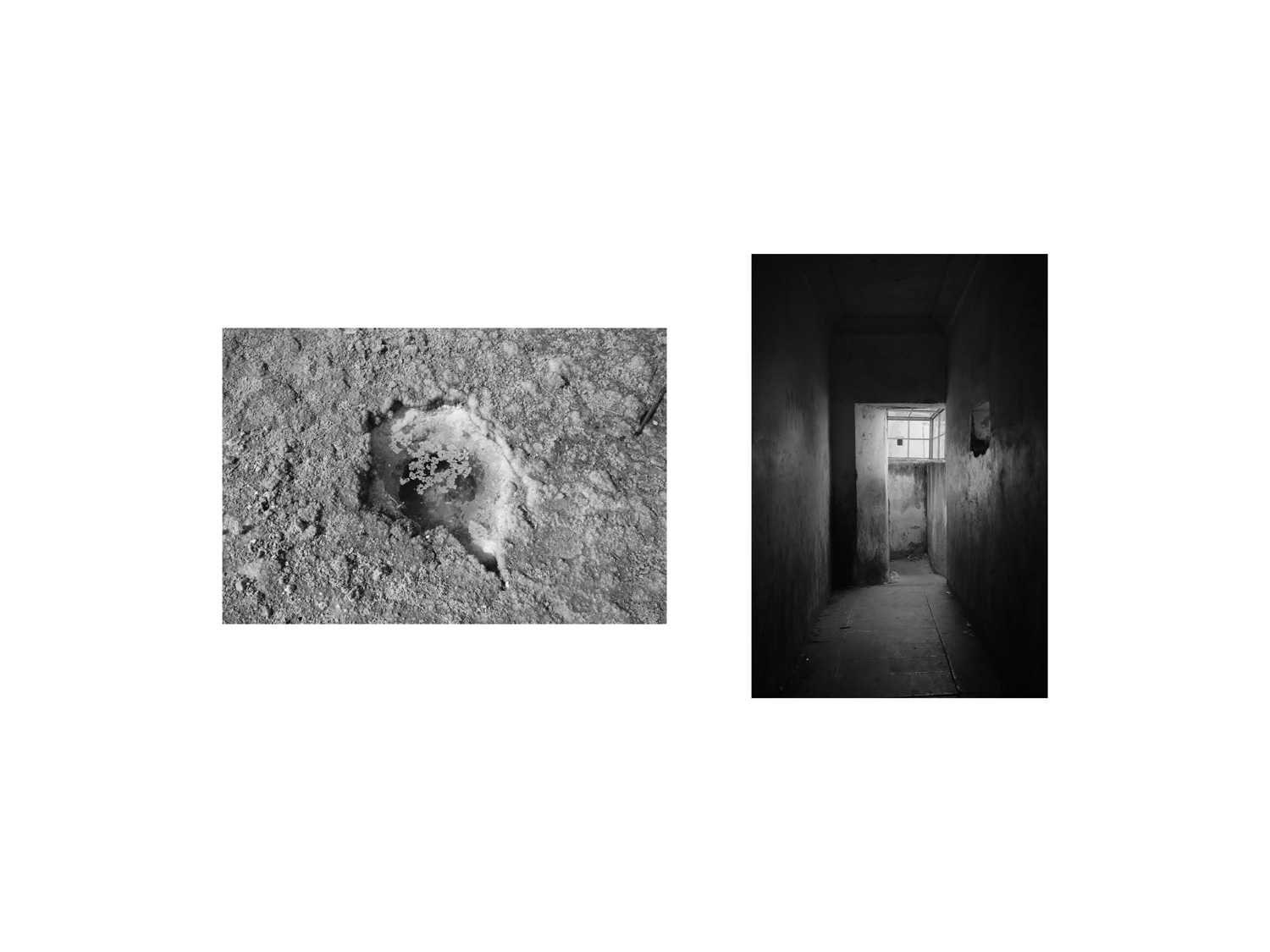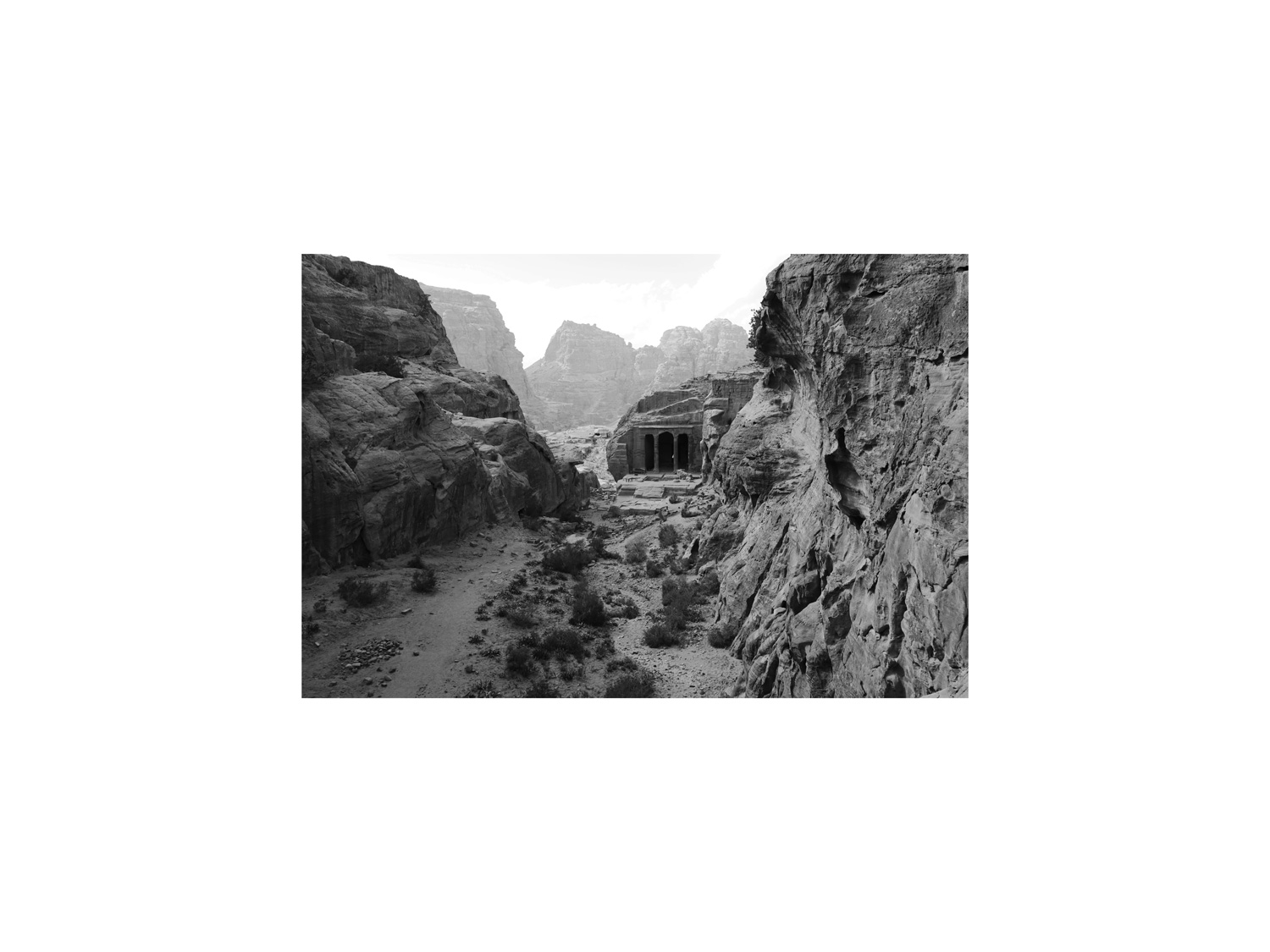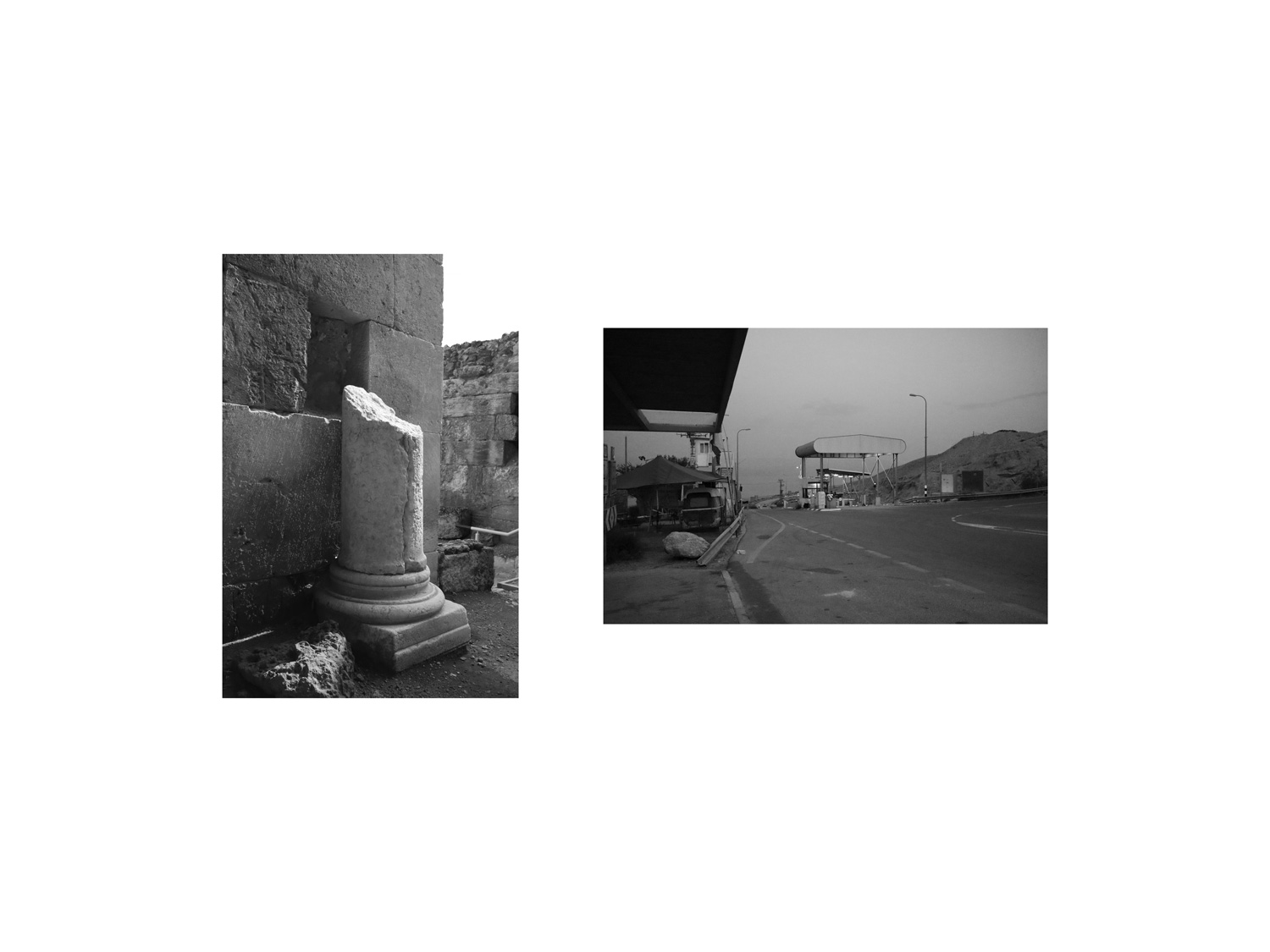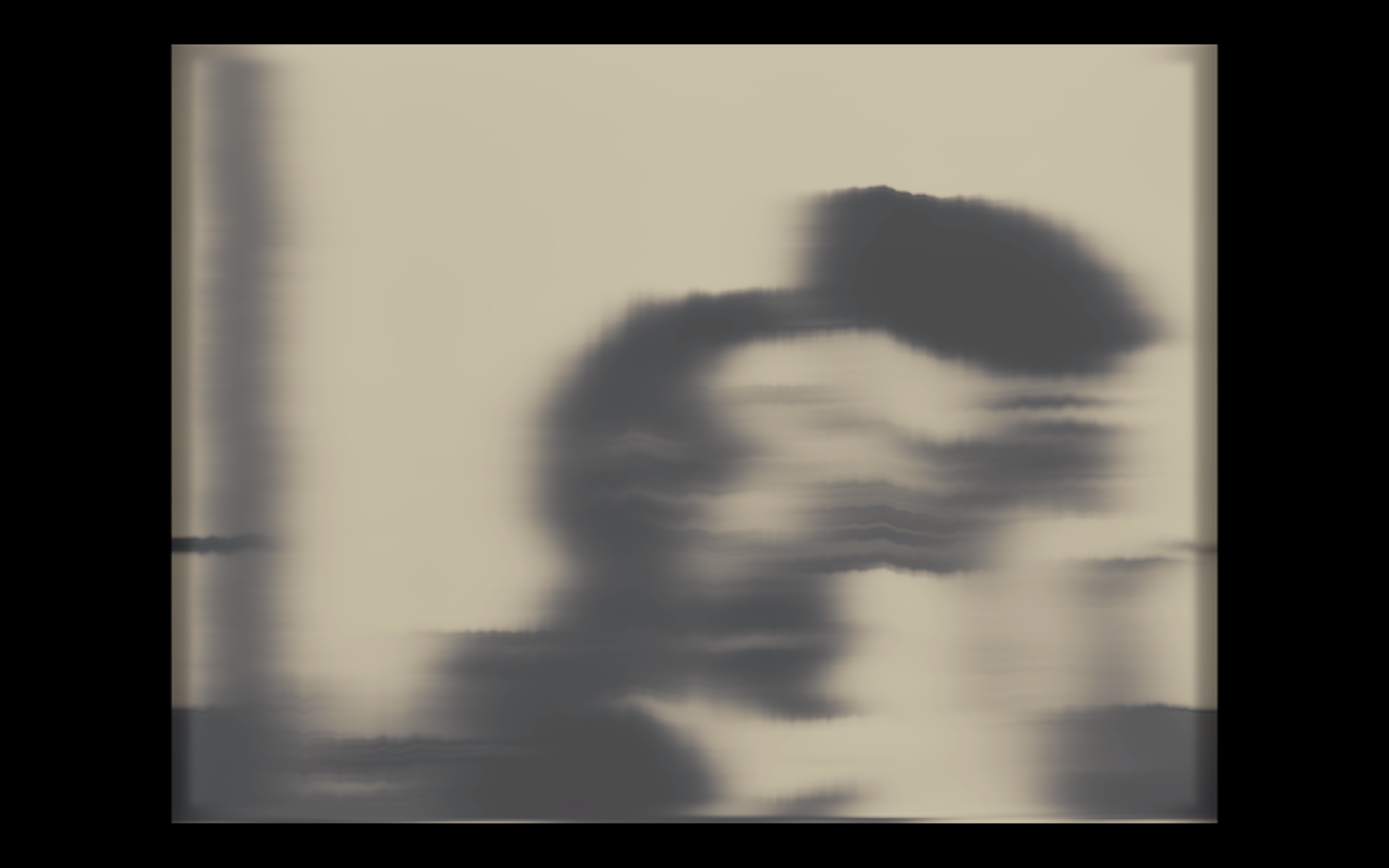




Longest way round is the shortest way home, 2019
Inkjet print on 300gsm FineArt paper
Series of 15 Panels, 60 x 80 cm;
5+1 AP
Longest way round is the shortest way home, 2019-2021, it’s a series of fifteen geographical analogies, assembled from a series of photographs taken by the artist during a long travel started in 2019. The title is taken from a proverb, appropriated by James Joyce in Ulysses (1920).
Think you're escaping and run into yourself. Longest way round is the shortest way home.
— James Joyce, Ulysses
Inkjet print on 300gsm FineArt paper
Series of 15 Panels, 60 x 80 cm;
5+1 AP
Longest way round is the shortest way home, 2019-2021, it’s a series of fifteen geographical analogies, assembled from a series of photographs taken by the artist during a long travel started in 2019. The title is taken from a proverb, appropriated by James Joyce in Ulysses (1920).
Think you're escaping and run into yourself. Longest way round is the shortest way home.
— James Joyce, Ulysses

Traces (Series) , 2019 — 2022 (Ongoing)
Digital photographs, Injket prints, dimensions variable
After people have left, only memories and a peculiar kind of materiality remain;1
Traces examines human imprints on the landscape and questions our ideas of idillic, wildnerness and natural-nature2 ignoring or denying the implications of the natural-cultural disctinction or the effects that these ideas have on the landscape.
Inversively, one could also read the possiblity of whats left behind if humanity would collapse, providing an apocalypic (?) view of a world without us.3
Featuring sand, both thematically and conceptually, appearing as a visual unifier in these photographs - taken in multiple locations in the course of several months - but also as a methaphor of different photographic fragments that together are perceived and compose an unfified whole.
This whole is however always shifting and it’s transience perhaps best revealed only by crystallising it’s continuum.
Nightwalker, 2018
Inkjet print on 300gsm Baryta paper, 105 x 70 cm
Nightwalker is a photograph taken during a night walk in London.
Although this photograph appear to us in bright neon-green, they haven’t been retouched of manipulated.
Nevertheless it appear to us as fiction, cinematic shots. The impossibility of reality posing to us, a shiny car parked on a hotel porch lightened by a bright green light around the corner overlaps our understanding of reality and fiction, public spaces and imaginary set designs.
As we approach this porch, certain of its mirage, we realise we are falling into uncanniness and becoming the protagonists of a fictional feature, or a gaming render engine.
The place is in silence and seemingly abandoned - welcoming us. From, far we can hear the noise of the busy streets and police sirens, a likely background soundtrack from Gran-Theft Auto.
Used to be in the comfort of shadows, the group is suddenly divided. The lens of the camera reveals an abrupt adrenaline rush provided by the escapism of a dream-like state of mind barely tied to any space in time.
The car seductively appears as a divine creature, a holy motor, waiting for Carax’s gaze. The nightwalker poses in front of this monumental object of perfect fictional engineering that can so thornily express the tensions of counter-culture aesthetics and capitalistic dreams.
The moment is broken with a shout. The queerness of this moment is interrupted by the harassment of a loud group of individuals.
And we’re reminded why we night walk. Sometimes we’re not welcomed, even in our fictions.
— Joao Gil, 2019
Inkjet print on 300gsm Baryta paper, 105 x 70 cm
5+1 AP
Nightwalker is a photograph taken during a night walk in London.
Although this photograph appear to us in bright neon-green, they haven’t been retouched of manipulated.
Nevertheless it appear to us as fiction, cinematic shots. The impossibility of reality posing to us, a shiny car parked on a hotel porch lightened by a bright green light around the corner overlaps our understanding of reality and fiction, public spaces and imaginary set designs.
As we approach this porch, certain of its mirage, we realise we are falling into uncanniness and becoming the protagonists of a fictional feature, or a gaming render engine.
The place is in silence and seemingly abandoned - welcoming us. From, far we can hear the noise of the busy streets and police sirens, a likely background soundtrack from Gran-Theft Auto.
Used to be in the comfort of shadows, the group is suddenly divided. The lens of the camera reveals an abrupt adrenaline rush provided by the escapism of a dream-like state of mind barely tied to any space in time.
The car seductively appears as a divine creature, a holy motor, waiting for Carax’s gaze. The nightwalker poses in front of this monumental object of perfect fictional engineering that can so thornily express the tensions of counter-culture aesthetics and capitalistic dreams.
The moment is broken with a shout. The queerness of this moment is interrupted by the harassment of a loud group of individuals.
And we’re reminded why we night walk. Sometimes we’re not welcomed, even in our fictions.
— Joao Gil, 2019




Blue Vanities, 2018
Internet downloaded footage (manipulated)
Color, 4:3, 01:53:58, 4K Movie, silent
Blue Vanities (2018) video of digitally images found online further manipulated to the state of near abstraction.
The images are remniscents of a post-internet pornography movement, that aimed at purchasing vintage porn films and tapes; to digitalize them and re-release them under a series of volumes compiling these films, a collection that is intitled Blue Vanities, where the project takes it name.
João appropriates one of these films, as well as the title, and decides, with a minimal gesture, to manipulate the images by blurring, altering the color and further degrating them, digitally.
In this process the images become ambiguous, and with that uncertainty, a certain disconfort arrises. We become estranged to a coreography of gestures, that we had already become desensitised. Here, this uncertainty aims at reflecting upon the hyper-normalisation of the sexual act, within very clear and artificial boundaries.